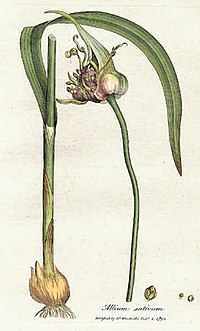
Photo from wikipedia
Soil stabilization is the method of improving the strength characteristics of in situ soil by compaction or by the addition of admixtures. Clay minerals have small particles and a variable… Click to show full abstract
Soil stabilization is the method of improving the strength characteristics of in situ soil by compaction or by the addition of admixtures. Clay minerals have small particles and a variable degree of crystal perfection. Therefore, construction on clayey soil is really an arduous job due to low strength and swelling problems. In this paper, an attempt is made to determine the improvement in geotechnical characteristics of locally available clayey soil by adding garlic skin and rice husk ash (RHA) as admixtures. Both are agricultural wastes that pollute the environment. The geotechnical properties considered in this study are optimum moisture content (OMC), maximum dry density (MDD), California bearing ratio, and unconfined compressive strength (UCS). Tests are carried out by mixing various amounts of garlic skin and RHA proportionally and the results are analyzed. Microlevel investigations are done by scanning electron microscopy (SEM), energy-dispersive X-ray spectroscopy (EDS) test, differential thermal analysis (DTA), and thermo gravimetric analysis (TGA). Test results show that the efficiency of these stabilizing agents depends upon the amount of garlic skin and RHA, type of soil, and field condition. In clayey soil, the addition of 4–6 % garlic skin and 5 % RHA by the weight of soil increased the strength characteristics. SEM, EDS, DTA, and TGA reports also confirm the favorable changes on structure and properties of clay particles with the addition of RHA and garlic skin.
Journal Title: Geotechnical Testing Journal
Year Published: 2017
Link to full text (if available)
Share on Social Media: Sign Up to like & get
recommendations!